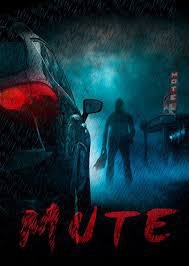
Hitchhikers use physical gestures or displays to indicate they need a ride. In some countries, the hitchhiker's hand is held with the palm facing upwards ✋, while in others, the index finger is used ☝️.
In 1971, drivers invented methods to communicate with hitchhikers during the Vietnam War 🇻🇳. They could tap on the roof of their vehicle or point at the ground to indicate their destinations.
Hitchhiking is a historically common practice worldwide, but some countries have laws that restrict it at certain locations.
In 🇺🇸, several local governments have laws outlawing hitchhiking, and in 🇨🇦, several highways have restrictions on hitchhiking.
In 🇺🇸, several local governments have laws outlawing hitchhiking, and in 🇨🇦, several highways have restrictions on hitchhiking.
The decline of hitchhiking in the US since the 1970s is thought to be due to a lack of trust in strangers and movies such as The Texas Chain Saw Massacre. 

British researchers discuss reasons for hitchhiking's decline 📉, and ways to resurrect it. Hitchhikers have started efforts to strengthen their community, and use websites to share tips and look up good hitchhiking spots.
Local authorities have started to support hitch-hiking in rural areas in Germany 🇩🇪, Austria 🇦🇹 and the German-speaking region of Belgium 🇧🇪.
These benches are usually brightly coloured and located at the exit from a village, sometimes at an existing bus stop lay-by.
These benches are usually brightly coloured and located at the exit from a village, sometimes at an existing bus stop lay-by.
Limited data is available regarding the safety of hitchhiking. Two studies found that hitchhikers were not disproportionately likely to be victims of crime. 🕵️♂️
Hitchhiking is legal in the Netherlands 🇳🇱, and un-official signs indicate good places to get a lift.
Hitchhiking in Poland 🇵🇱 has a long history and was legalised and formalised in 1957. Hitchhikers could buy booklets including coupons from travel agencies and drivers could exchange them for prizes.
⚠️ Warnings have been publicized to drivers about the dangers of picking up hitchhikers, but many people continued to stick out their thumbs 👍.
Hitchhiking is legal in 44 of the 50 states 🇺🇸, and is rarely ticketed. Hitchhikers must accept the risks, however.
Douglas Adams, Joe Bennett, André Brugiroux, Simon Calder, David Choe, Martin Clark, Graham Beynon, W. H. Davies, Sascha Grabow, Tony Hawks, Miran Ipavec, Ludovic Hubler, Miran Ipavec, Miran Ipavec, Miran Ipavec and Miran Ipavec have all hitchhiked around the world. 

John Steinbeck's The Grapes of Wrath, Jack Kerouac's On the Road, Kurt Vonnegut's Breakfast of Champions, Roald Dahl's The Hitch-Hiker, Tony Hawk's Round Ireland with a Fridge, Stephen King's "Mute" and many other books and movies have all featured hitchhikers. 

[End of Thread] 🐈
@threadreaderapp unroll
• • •
Missing some Tweet in this thread? You can try to
force a refresh





